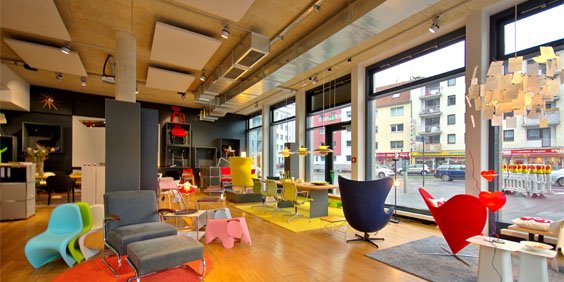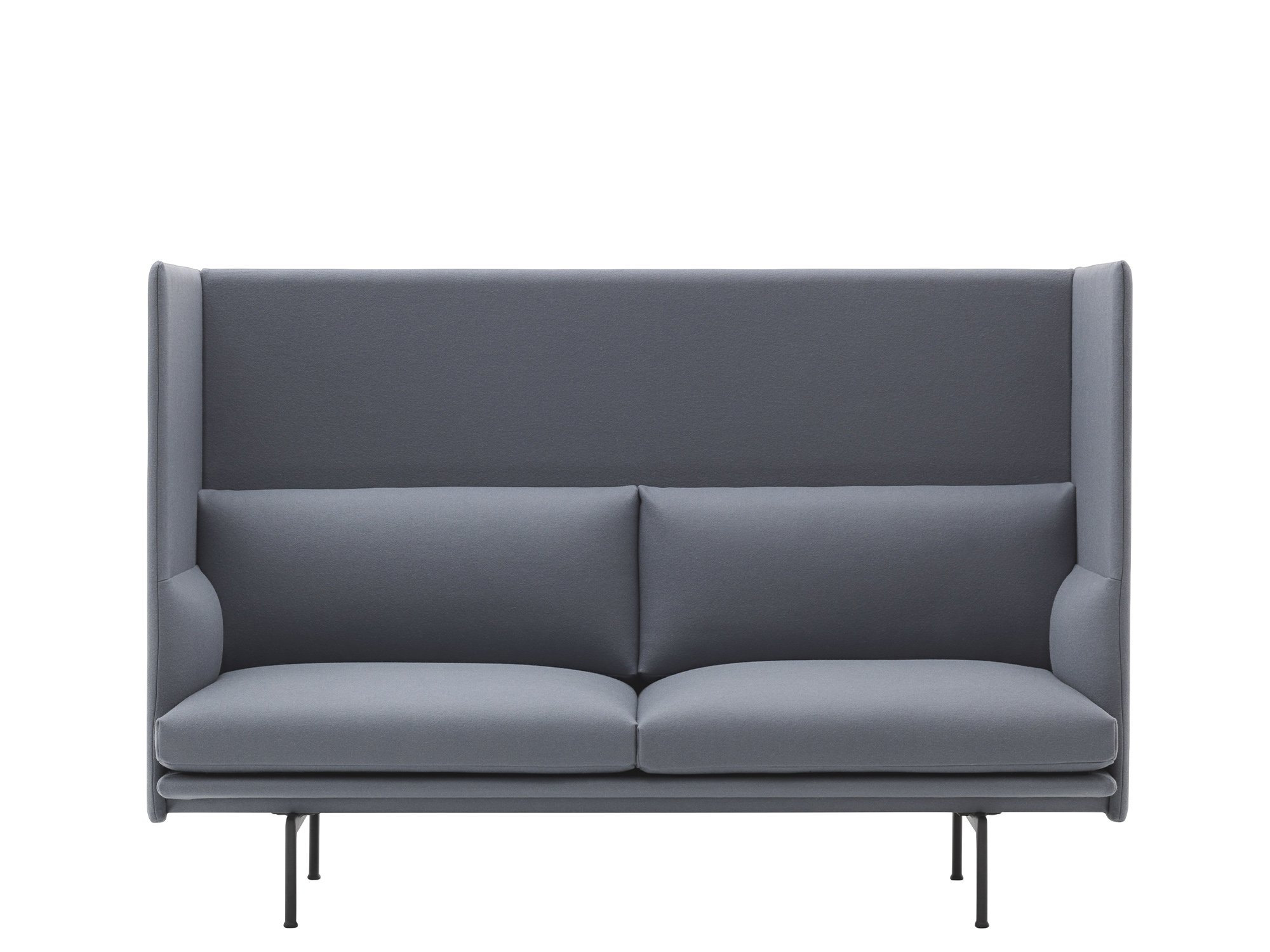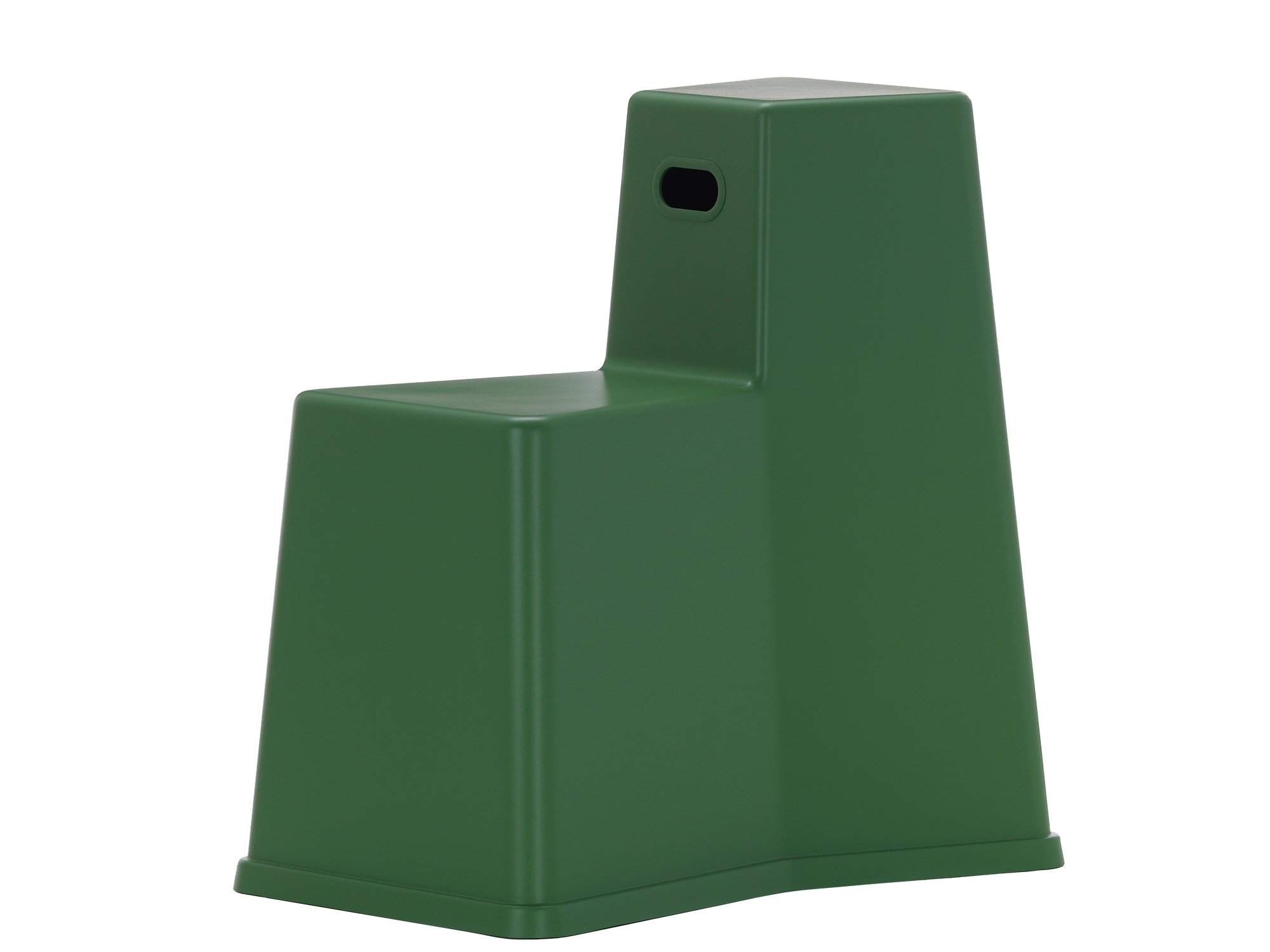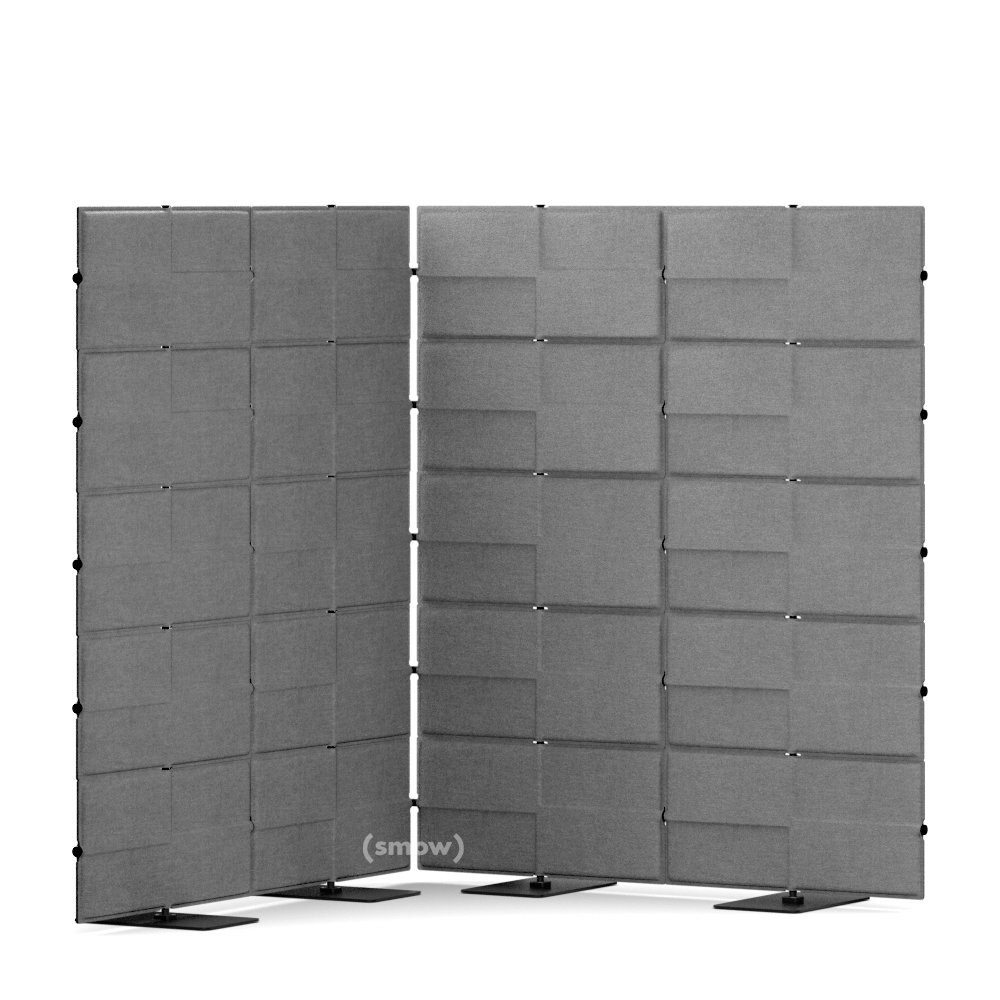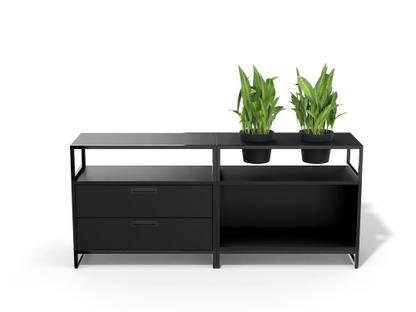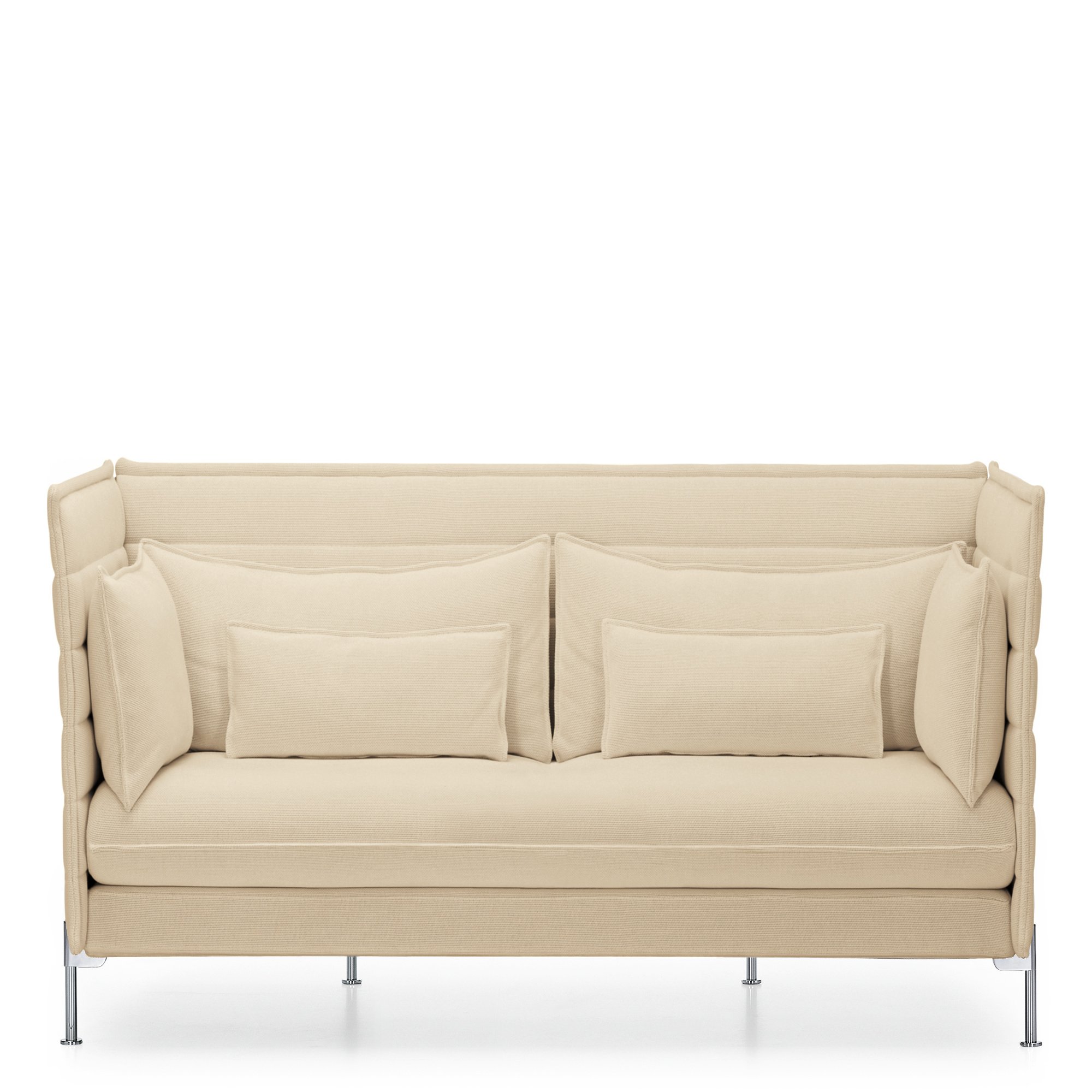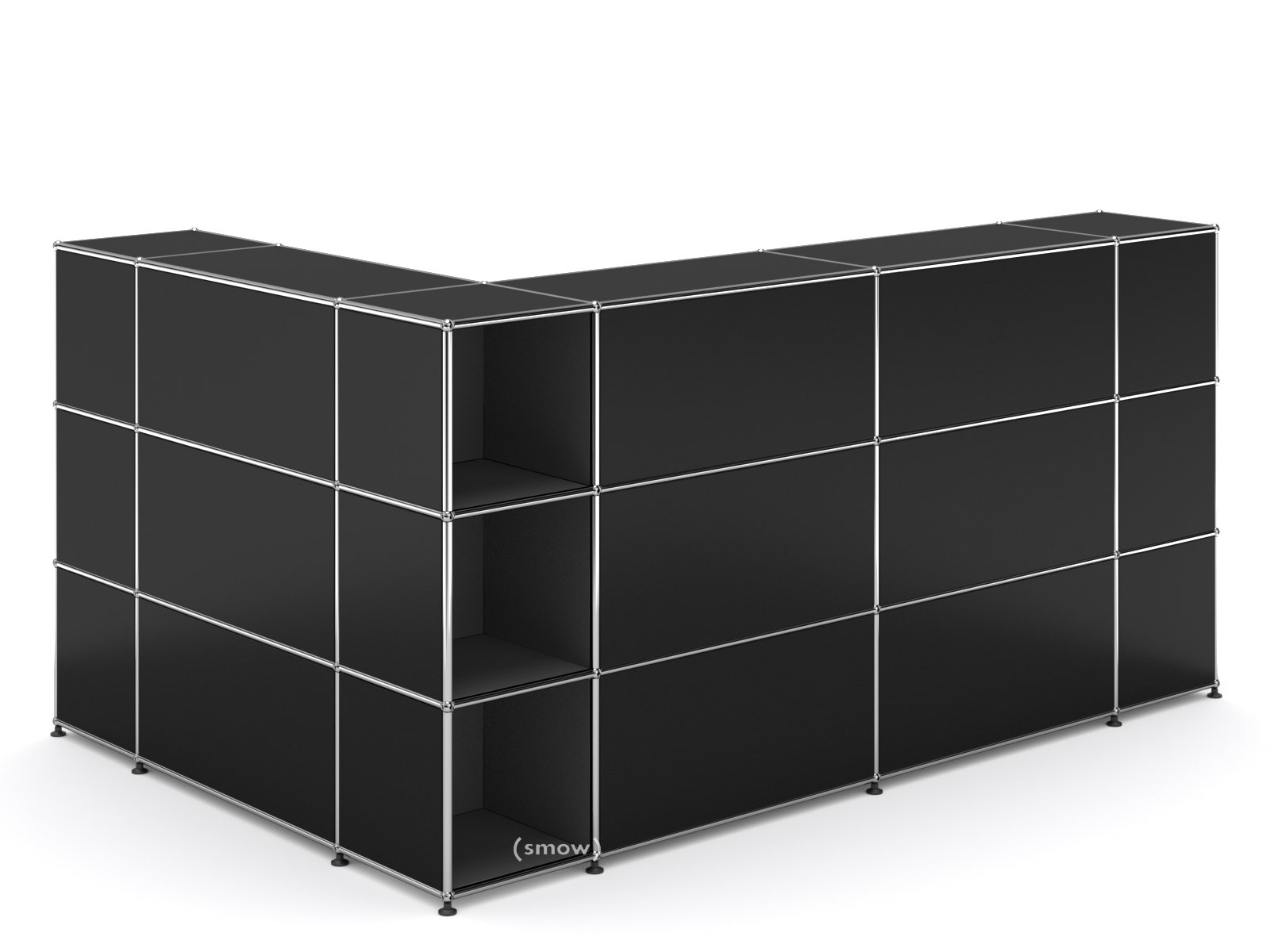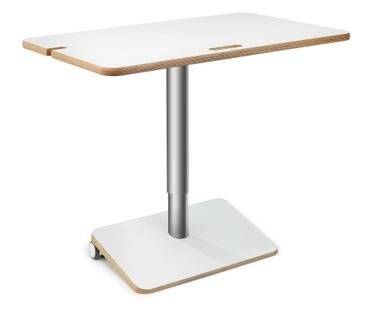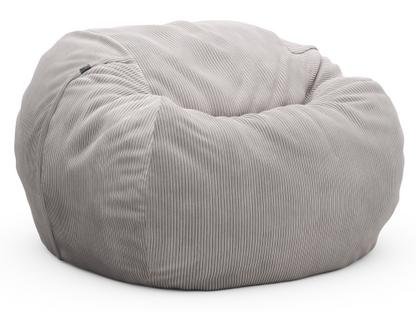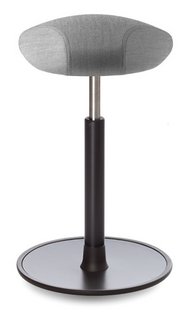Between the chairs: An A to Z for establishing central zones
- Topics
- Acoustics
- Colours & Materials
- Home Furnishing
- Light Planning
- Medical practice
- Public Spaces
- Workplaces

Open-plan offices with lots of intermediate space: Employ the gaps
Open, transparent, communicative - open space offices stand for the new lightness of collaboration and agility. Long office corridors with small single rooms are a thing of the past and open-plan offices are becoming more and more commonplace - not least on account to increasingly flexible working hours and routines. However, large office spaces also harbor potential for conflict.
One problem area of the open-plan office is without question the middle: dark, uncomfortable and loud, several challenges for room planning are bundled here. How does one optimally set up these restless, troublesome areas in the office? Ensuring that unpopular spaces in the office are used effectively, and the ideas of New Work can withstand office reality, requires well thought-out room concepts. Below we have collected the best furnishing ideas for the so-called central zone complete with furnishing solutions for privacy and sound insulation as well as zoning without conversion - whether for meet & greets, stand-up meetings or as quiet zones.

In the centre of attention: What is the central zone?
In general, the most popular office desks are by the window. Indeed most all national workplace directives stipulates that workplaces should receive as much daylight as possible and should therefore be aligned along the windows. The space in between is the central zone. The area is often unused and so when furnishing an office the question of how to use unused office space often arises.
How does one optimally furnish the central zone?
In open-plan offices the individual workplace has less importance: it takes up less space in planning, and desk sharing and activity-based working facilities are increasingly taking the place of large executive offices and personal desks. More open structures make the central zone the centre of attention.
At the same time, the classic workplace has been expanded to include many different areas of use: think tanks for teamwork or concentrated individual work, open meeting areas and lounges: and the central zone is particular well suited for taking on a whole range of functions. Whereby it is also conceivable that the central zone could be used as a cloakroom, waiting area, break area and cafeteria.
Central zones are the central point in the office where people from different teams and departments meet. This area offers the ideal conditions for a relaxed get-together. Central zones are suitable as a place for an informal conversation, but also as a retreat for a short break from work or a private phone call. With a clever privacy and noise protection solution, a quiet individual workplace can even be created in the middle of the hustle and bustle, where employees can withdraw completely if necessary.
The market square as a meeting point in the office
An all-in-one solution for the central zone is the so-called market square. As a large meeting place, the market square works for practically everything: here you can meet and talk to each other, confer in teams of different sizes or work together in changing constellations, have a coffee in peace or meet customers.
Convergences on natural walking routes through an office are ideal for such meeting places, and should be large enough for all team members to find space together and thereby aid communication and efficiency. As a general rule plan with 150 to 400 square meters for around 200 employees.
Social Furniture and the Network Principle
Modern workspace concepts focus on people and togetherness: New Work means unity, collaboration, community and ultimately always aims at exchange and networking. And that not least because exchange is the prerequisite for the flow of information, band ut also for community and internal cohesion in a company.
The work environment can promote this form of encounter through open spaces and visibility. Ideal framework conditions can be found in the central zone. Social furniture complements the networking principle with its functional properties.
Establish retreats in the office
One resource is in high demand in open workspace designs: privacy. Especially in furnishing concepts that are geared towards agility and teamwork, the need for space for quiet, concentrated work must not be forgotten. Part of the work is often outsourced to the home office, but there is another way: peace can be found in the middle. Because central zones are multifunctional miracles and, with the right equipment, enable everything from exchange to retreat: something shown by the central zone developed for cadooz in Hamburg - relaxation, as well as communication, are integrated in the middle of the office.
Furniture for flexible office space design
In large offices one often finds oneself seeking to balance openness and calm. Room systems and communication modules that divide large rooms into individual functional areas are ideal for enabling communication and concentration in equal measure.
The days of massive filing cabinets are over. Instead, the trend is for airy areas with a light look and dynamic furnishings with mobile containers, multifunctional furniture and mobile zoning elements - preferably with integrated sound insulation. Functional structures can also be created within the open space with relaxation zones, think tanks and telephone booths.
To ensure that the furniture in the central zone is more than just filler, a needs analysis for individual room planning is recommended. Reversible structures are considered to be particularly advantageous for companies on a growth course: furniture systems such a Vario, Gerriets or USM can not only be individually planned, but also subsequently converted and adapted to changing needs.
The best place for stand up meetings
A stand-up meeting is a short meeting where people get together in an informal setting. The special feature: you stand. Stand-up meetings are considered an efficient way to clarify issues in the shortest possible time. Central zones where many paths cross are thus an excellent place for stand-up meetings. In addition to bar tables and think tanks, arena structures are also suitable for holding short meetings in a relaxed, open atmosphere. Half-round arena solutions can be built, for example, with Vario storage elements.
What furnishings for office meeting points?
There are many ways in which communicative places can be created in the central zone of the open-plan office, and range from small meeting points to barista stations. In order for meetings to be held effectively in the central zone certain furnishing elements are essential: in addition to a bar table and/or flexible seating options, a whiteboard, a screen and connection and charging options for laptops are musts. Combined seating furniture with integrated storage space is also suitable for the open structures in the central zone.
Spatial planning from the middle
One of the biggest challenges when setting up central zones is the noise level; noise not only caused by conversations, but also by room reverberation. The visual stimuli are also decisive for a concentrated atmosphere in open office spaces. A well thought-out room layout in an open-plan office is therefore of enormous importance.
Tip: Meeting zones should not be set up directly next to individual workstations. In addition, paths for external people (customers, suppliers, etc.) should be taken into account and not routed through the middle of the workplace.
From Acoustics to Zoning: the ABC of the central zone
Acoustics
For good acoustics in open office spaces the sound must be stopped and reverberation avoided. This can be achieved through classic acoustic elements, but also through a variety of furnishings in the central zone: the use of different heights, shapes and materials automatically have a positive influence on the room acoustics.
Bistro
Where once there was the tea kitchen, today large offices rely on a café atmosphere – complete with barista and espresso machines. However, so that the work café is not only used for breaks, but is also perceived as an enriching element in everyday work niches for concentrated work, separated from the hustle and bustle, are necessary.
Chaos
While clutter in the office can be uninviting and disruptive, certain irregularities seem natural and therefore comfortable: the state of perfect chaos in the central zone is achieved through the measured use of different colours, dimensions and angles, as well as patterned accents.
Dimensions
A functional central zone can be set up even in a few square meters. For example, with a shielded think tank or a bar table for stand-up meetings.
Experienced planners
Large offices should ideally be designed with experienced interior planners. The furnishing professionals from smow design tailor-made solutions for the individual requirements of a company on the basis of a needs analysis
Furniture, social
Contemporary workspace concepts always focus on people and togetherness. One result of this development is furniture specifically designed for communicative exchange. Social furniture offers the ideal furniture for central zones: they are characterized by flexibility and multifunctionality and are perfectly suited to dividing open spaces into different functional areas.
Greenery
Plants are an integral part of offices. They are indispensable not only because of their air-purifying effect; rather, plants are also perfect as room dividers, sound insulation and decoration. The all-in-one solution are partition walls with real moss.
Home office
Hybrid models are seen as the future of everyday office life. The home office is becoming increasingly important and is often used as a place for concentrated work. It is thus all the more important that personal exchange is promoted in the office through deliberately created meeting places.
Islands
Large office spaces are best divided into different islands. In addition to an area for concentrated work, retreat islands and well thought-out meeting places should not be neglected.
Lounge
A safe choice for central zones are lounge areas. High-quality sofas and armchairs, elegant tables and a pleasant lighting atmosphere create a relaxed atmosphere through their appearance alone.
Market Square
The middle of the office is ideal as a meeting place, for example in the form of a market square: the area should be clearly visible and accessible, warm materials, subdued zones and corporate-compatible accessories and decoration are inviting. A small range of drinks and snacks as well as a small kitchen make for the perfect canteen 2.0
Modular systems
Configurable furniture and room dividers are excellent means of choice for furnishing central zones. Modular systems enable permanent flexibility and rapid adaptability.
Network
In order for meaningful, efficient networking in the office, the furnishings must also focus on communication. Social furniture and flexible structures form the best framework for good interaction within and between teams.
Open-plan office
Whether open space or activity-based working, all office concepts designed for openness face the same challenges of an open-plan office. Anyone who does not invest in a balanced relationship between classic workplaces, meeting places and retreat areas prevents teamwork instead of promoting it.
Open Space
Open-plan central zones continue the principle of open space: They encourage collaboration and creative exchange, but also offer structure and privacy through clever room planning.
Partitions
Partition walls are essential for setting up central zones. They structure the space, insulate the noise level and ensure more peace and privacy when working. Modern partition wall systems not only absorb sound, but also have several functions as a pin board, storage space, coat rack or holder for hanging plants.
Retreat
A room must be optically and acoustically shielded in order to be accepted as a retreat in the office. To this end, half-open meeting corners can also be used in the central zone: with acoustically effective walls and ceiling elements, they counteract excessive noise levels and allow for retreat without completely isolating oneself.
Storage Space
Digitisation has taken the place of files, post office and a media library. However, you cannot do without filing completely in the office. A semi-open or closed room for documents, receipts and office utensils as well as the printer and copier is perfect for the central zone in the office. The storage space should be easy to reach, but it does not need daylight and is therefore best placed in the middle of the room.
Trimmings
Even if the personal individual desk is slowly losing importance, individuality, personal decoration and plants are important feel-good ingredients in open-plan offices. Not everything has to be perfectly coordinated for a friendly atmosphere!
Unpopular office space
Desks in the centre of a large office space are often unpopular. Clever room planning with a combined lounge/conference area and shielded touch-down workstations in the middle zone can be an excellent alternative.
Variable
Modern office systems think for themselves and offer variable solutions from mobile containers to shelving systems. Thanks to the uniform design, a visually coherent image can be created even on large surfaces.
Work lounge
A work lounge is a screened-off work area in the middle of the office. However, for a work lounge to be meaningfully used as a temporary desk, the areas must be ergonomically furnished and equipped with good lighting, sufficient sockets and functioning WiFi.
XXL
If a very large area is available in the middle of the office, the central zone can be used as a market square. A good market square requires around 150 to 400 square meters of space. With more than 200 employees, one meeting place per floor is recommended, as different meeting places tend to lead to the formation of small groups instead of a big get-together.
Yoga
Thanks to flexible structures, the area in the middle of the office can be used in a variety of ways. So why not host cross-team yoga sessions in the central zone and start the working day with a Sun Salutation?
Zoning
Room dividers can be used to divide open-plan offices into functional areas. However, these should not be more than hip or chest level so that the lines of sight remain and the incidence of light is not disturbed. This way you keep the overview and the feeling of openness.

